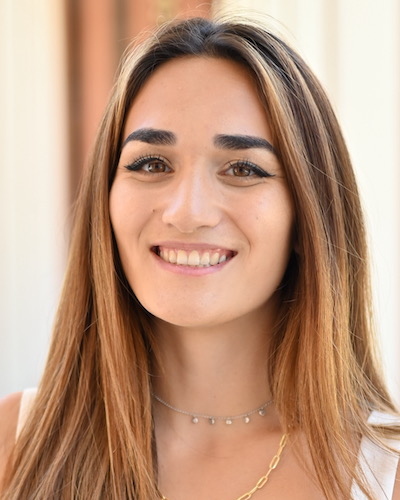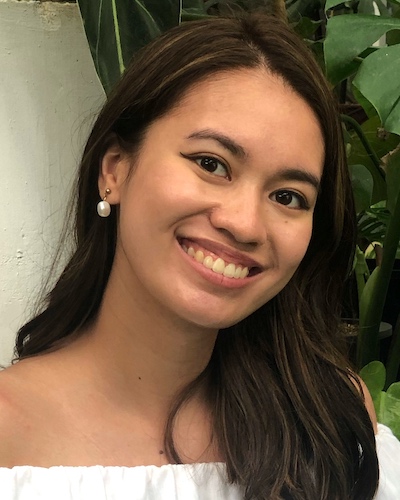Student Blog
Classes

Silver Linings ⟩
December 3, 2022, by Aisha
On Thursday, my team and I presented a poster on our community program proposal for our OT 537 course. I felt incredibly proud of the hard work we put into developing a justice-based occupational therapy program called Silver Linings to help previously incarcerated youth successfully reintegrate into the community. Using an occupational therapy lens, we aim to reduce recidivism which is the likelihood of rearrests, and occupational deprivation, which is when external circumstances restrict or limit people’s ability to engage in meaningful activities that promote health and well-being. As many of you may know, youth of color are disproportionately represented in the criminal justice system and treated worse than their white counterparts (Gigante et al., 2022). Although this is a proposal for a class project, my team members and I are passionate about increasing access for marginalized groups and promoting occupational justice. Therefore, we would like to see programs like this implemented in the future. It was encouraging to hear Dr. Arameh Anvarizadeh, one of our inspirations and role models in this field, tell us we should make this happen. That moment was invigorating and reignited the drive I felt when I began OT school!
My incredible team members and me at our poster presentation! Shout out to Dejaney, Zoë, and Sadie. 😊
I’m not going to lie; this semester was very challenging. I struggled with imposter syndrome, burnout, and personal issues while balancing family obligations, work, and school. All of these factors impacted my motivation and mental well-being. I’ve had one too many crying sessions while battling self-doubt and the urge to give up.
No matter how challenging a situation is, there are always silver linings. As I write this, I am grateful for my countless blessings this semester. The first is my supportive family, friends, peers, and professors, who constantly encourage me to take care of myself, produce quality work, and remind me of how far I’ve come. I am forever thankful to be surrounded by brilliant human beings who challenge and inspire me to be the best version of myself personally and professionally. Second, I discovered rock climbing, my new hobby and restorative occupation. Lastly, in the field of occupational therapy, where there is only 5% Black representation, I am filled with joy to be in the midst of incredible history in the making.
Some of my peers, a group of Black women who will be future occupational therapists, and Dr. Anvarizadeh!
Gigante, C. I., Rak, K., Kaplan, A., Helmcamp, L., Otoo, C., & Sheehan, K. M. (2022). A community-based youth diversion program as an alternative to incarceration, Illinois, 2017–2019. American Journal of Public Health, 112(9), 1265–1268. https://doi.org/10.2105/AJPH.2022.306946
⋯

External Residencies Are the Move ⟩
November 22, 2022, by Leah Mary
Classes School/Life Balance
During my 2nd year in the Entry-Level Master’s program, I felt enormous pressure to apply to the internal residency. I had my rose-colored glasses on. USC’s internal residencies are competitive, prestigious, and well-funded. Everyone was applying, so I felt compelled to apply. However, when I researched and learned about each residency site, I couldn’t see myself there. It wasn’t for me.
I didn’t think I was going to do the Post Professional OTD. It was expensive, and I didn’t want to pay for another year of school during a pandemic. I was very close to not applying until I talked to Dr. Bream. We explored the external residencies sites that suited my interests and could support me. I ended up committing to Hiller Therapy, where I am both the Occupational Therapy Resident AND a part-time employee, and I LOVE IT!
So here is a list of why I recommend getting excited about an external residency:
Schedule
You can create your own schedule! I am completing the Post-Professional OTD within a year and a half instead of one year to allow me to work part-time. In addition, you have the flexibility to defer for a semester or a full year.
Income
Oh yeah, you can work as an OT once you pass the NBCOT and obtain your license. That means you can make an income!
Low-stress
I did not feel overwhelmed after summer fieldwork. I was able to take a couple of OTD courses and have enough time to study for the NBCOT without the pressure of 20-30 hours/week of residency.
Location Location Location
If you don’t want to stay in the LA area, you can do your OTD anywhere (nationally or internationally). The OTD courses can either be in person or over Zoom.
Advocate for your needs
I was able to ADVOCATE for what I needed and wanted from my residency site.
Ultimately, do what you want to do. Advocate for your needs, and don’t let institutions or people pressure you into things you don’t want to do!
⋯

Chika with Mika: Life as a Post-Professional Master’s Student 2022 Edition ⟩
November 18, 2022, by Mika
Classes Community Diversity International Living in LA School/Life Balance Videos
Hello everyone!
So in Tagalog, chika means “chit-chat”. For this month’s blog post (or rather vlog post), I wanted to chika with you what’s it like to be a post-professional master’s student here in USC Chan! Get to see the Health Science Campus where we have most of our classes and meet some of my friends here in the program. I also shared some clips of my adventures here in LA, particularly in the Grand Central Market, Griffith Park, and Venice Beach!
Happy watching!
⋯

A Week in the Life! ⟩
November 17, 2022, by Yoojin
Classes Community Living in LA School/Life Balance
As a student ambassador, one of the questions I get the most is how my weekly schedule looks like. Do I have time for a part-time job? What about hobbies? Hanging out with friends and family? Basically, when I enroll in this program, will I have a life outside of school? The short answer is yes. I have a great balance of academics and engaging in my favorite occupations.
With that being said, here’s a little glance into a typical week:
Monday: aside from class from 1:30 PM – 5:30 PM, I go to the gym, go grocery shopping, or just sleep in. In the evening, I try to catch the sunset (at least I did before Daylight Savings ended) on one of my favorite short hikes near HSC, Ascot Hills. All USC students have a free membership for the three gyms on UPC and one at HSC.
Tuesday: Level I Fieldwork, a once-a-week hands-on experience at a site in the community (ex. hospital, private clinic, community center, permanent supportive housing, school). I’m here from 10 AM – 4 PM, but your hours will depend on your specific site.
Wednesday: class from 9 AM – 4:30 PM, with a 1.5-hour lunch break to eat lunch and work on a drawing in the craft restorative classroom with my friends. Throughout the semester, there are events led by various student organizations. This week, I attended an open forum with students and Chan leadership to discuss the recent administrative changes in Chan admissions leadership regarding holistic admissions and diversity.
Thursday: class from 9 AM – 4:30 PM, with a 1.5-hour lunch break where I usually work and grab Dunkin’ Donuts from on campus and attend a meeting. Global Initiatives (GI), USC Occupational Therapy and Science Council (OTSC), and Coalition of Occupational Therapy Advocates for Diversity (COTAD) are hosting a Friendsgiving dinner.
Friday: I have no class or fieldwork, so I run errands. In the evening, I go out with friends. LA has so many things to do. Here’s a previous student blog about some activities.
I’ve also picked up a handful of occupations over the summer that I mentioned in my previous blog. Work-life balance needs active effort to achieve, but it’s definitely doable in OT school.
⋯

Thank You, Occupational Therapy ⟩
August 22, 2022, by Leah Mary
Classes Fieldwork What are OS/OT?
The first time I heard about occupational therapy was during my Freshman Year (2016) in my seminar class with Dr. Jesús Díaz. One of our classes was dedicated to introducing us to occupational therapy. At the time, I was volunteering in different research labs studying the brain and thought I wanted to get my PhD in Neuroscience. I didn’t want to pursue occupational therapy (I know, what was I thinking!?).
Fast forward to the end of my Sophomore Year, I was pretty unhappy. While I found the research fascinating, something was missing. Most of the time, I was behind the computer, not interacting with individuals (and I’m a huge extrovert). I felt utterly lost. This was around the same time my grandmother was diagnosed with Glioblastoma, an aggressive brain cancer that impacted her overall well-being, requiring multiple brain surgeries and significant therapies.
My grandmother had a PhD in education, was a biology teacher, and my best friend. I was devastated seeing such an incredible person go through something so terrible. But my grandmother was determined and motivated to stay strong and healthy as long as possible. That summer, she went to inpatient and outpatient therapy at Shirley Ryan AbilityLab in Chicago. This was the second introduction I had to OT, however, this time in its most authentic form. I witnessed how OT positivity impacted her life. The therapist used meaningful occupations to motivate and connect with my grandma (she loved OT the most). And because the therapy was embedded into her daily life, she could continue at home when discharged. OT changed her life.
Right then, I knew that pursuing a career in OT was my calling. I loved the therapist’s interactions with their clients, the creativity involved in incorporating meaningful occupations, and their impact on people’s lives.
Fast forward again to now. I just completed my last II fieldwork at Shirley Ryan AbilityLab (on the same floor my grandmother was on) and graduated from the Entry Level Master Program. OT changed my life. It’s weird, but every time I engage in fieldwork or OT courses at school, I feel connected to her, so thank you OT.
⋯







